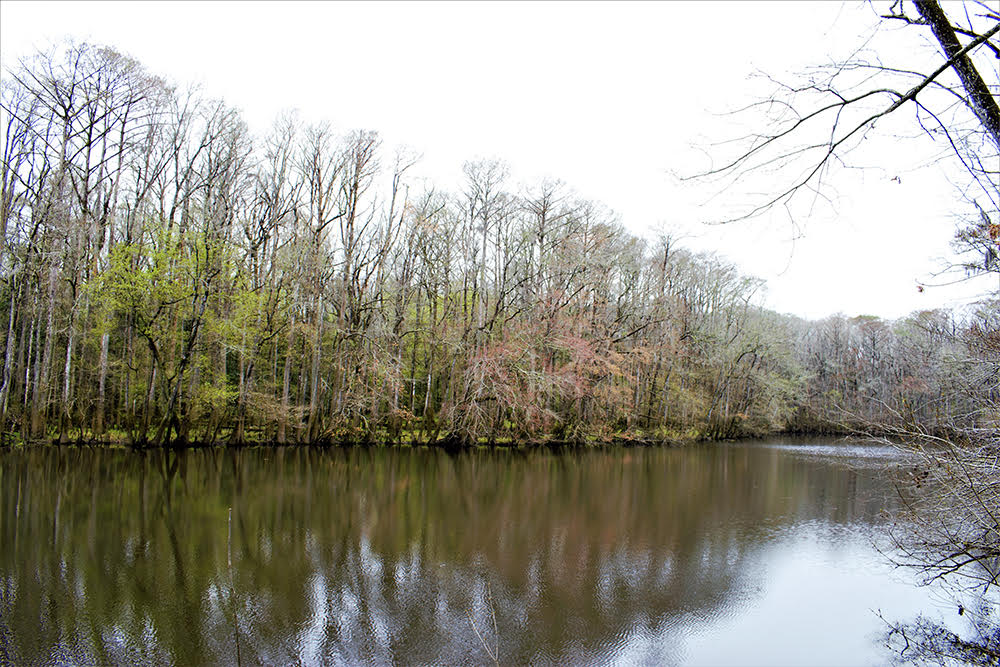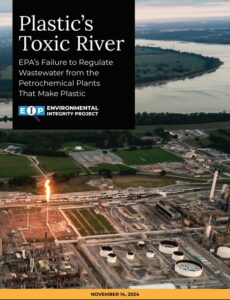
Tons of a hazardous plastics-industry toxin are being dumped into South Carolina waterways while state and federal environmental regulators sit on their hands, according to a new report from a national environmental watchdog group.
 The report, released earlier this month by the Washington, D.C.–based Environmental Integrity Project (EIP), found that Alpek Polyester plants in Moncks Corner and Gaston discharged more than 30,000 pounds of 1,4-dioxane, a long-lingering and likely cancer-causing chemical, into the Cooper and Congaree rivers in 2022 alone. And while the company’s Moncks Corner facility closed in March 2023, its Gaston plant remains in operation. That facility is located about eight miles northwest of Congaree National Park, the western border of which is bound by the Congaree River.
The report, released earlier this month by the Washington, D.C.–based Environmental Integrity Project (EIP), found that Alpek Polyester plants in Moncks Corner and Gaston discharged more than 30,000 pounds of 1,4-dioxane, a long-lingering and likely cancer-causing chemical, into the Cooper and Congaree rivers in 2022 alone. And while the company’s Moncks Corner facility closed in March 2023, its Gaston plant remains in operation. That facility is located about eight miles northwest of Congaree National Park, the western border of which is bound by the Congaree River.
“This toxic pollution from plastic production is unacceptable,” Congaree Riverkeeper Bill Stangler said in a statement. “Our federal and state agencies need to step up and protect our river and the downstream communities.”
In each instance, the discharges were perfectly legal, the report’s authors told the City Paper on Monday — a fact they say highlights a major regulatory failure.
“The Environmental Protection Agency (EPA) and states like South Carolina are falling down on the job in terms of protecting public health,” said Tom Pelton, co-director of the EIP’s Center for Environmental Investigations. “The state of South Carolina has the legal authority to require stronger pollution control limits on these plants, and they’ve chosen not to use it to protect our waterways.”
According to Pelton and other advocates, the regulatory breakdown that allows the 1,4-dioxane discharges is caused by what they describe as a legal loophole. Under the law, the EPA can and does set strict national standards for the release of certain plastics-industry toxins. But for many other chemicals, such as 1,4-dioxane, the EPA doesn’t set any specific limit, allowing states to handle regulation through their discharge-permitting processes.
As a result, environmentalists argue, federal and state regulators too often wind up pointing fingers instead of taking responsibility, creating gaps that corporations are quick to exploit.
“There are real holes, real deficiencies in the system,” Pelton said. “And that means a lot of very wealthy corporations are getting away with old and outdated [pollution-control] equipment that allows hazardous pollutants into our waterways.”
Contacted Monday, Alpek Polyester declined to comment on the report or its findings.
‘A huge problem’ of regulatory accountability
Though not technically a “forever chemical” like per- and polyfluoroalkyl substances (PFAS), 1,4-dioxane is similarly persistent in the environment, according to scientists. And while its full effects on human health aren’t known, federal officials say exposure from all sources, including drinking water, can result in liver and kidney damage as well as cancer.
Reached Monday for comment on the report, EPA spokesman Terry Johnson emphasized the agency’s supportive role in regulating 1,4-dioxane discharges into Palmetto State waterways.
“South Carolina takes the lead in regulating pollution in its waterways under the Clean Water Act, and the EPA works closely with them on this,” Johnson said in a statement, adding that companies are required to identify pollutants when they apply for state permits. “This includes pollutants that could affect water quality even where there’s not yet a specific numeric criterion, as in the case of 1,4-dioxane.”
In short, there’s no specific federal limit on 1,4-dioxane levels, but states should consider imposing restrictions when issuing discharge permits, according to the EPA.
In contrast, SCDES stressed its compliance with all federal requirements.
“While the U.S. EPA hasn’t issued a technology-based effluent limit or a federal maximum contaminant level for 1,4-dioxane, SCDES uses the
EPA’s health advisory level for 1,4-dioxane when evaluating whether it can require water-quality based limits for facilities in the state that use 1,4-dioxane or produce it as a by-product and have identified its presence in their wastewater discharge,” SCDES said in a statement.
Charleston Waterkeeper Andrew Wunderly called the lack of clear lines of accountability between federal and state officials “a huge problem” for S.C. residents, because Palmetto State regulators are inclined to go no further than federal regulations require.
“Our permits for pollution discharges in South Carolina are incredibly weak,” Wunderly told the City Paper, noting that state permits require manufacturers to screen for toxins like 1,4-dioxane, but not limit the amounts they discharge. “We like to call them ‘ghost chemicals’ because they just fly under the radar and you don’t know about them. It’s a huge loophole in the state’s permitting system.”
Looking ahead
In a Monday interview, newly-elected S.C. Sen. Ed Sutton (D-Charleston) argued the current situation with 1,4-dioxane is part of a larger pattern of weak plastics company regulation that first became clear in 2021. That’s when Texas-based Frontier Logistics paid $1.2 million to settle a lawsuit over their spilling of so-called “nurdles,” or tiny plastic pellets, into Charleston waterways. Prior to the settlement, Sutton worked with the Charleston Waterkeeper and others to identify the causes of nurdle pollution in local ecosystems.
“They were just using the cheapest possible method to ship and dispose of these things,” Sutton said. “Their practices at the time were, quite frankly, atrocious, and I was really disappointed in the lackadaisical way the state took that problem.”
And while Sutton sees the need for better federal oversight, he said state regulators need to act more aggressively to protect public waters.
“A slow federal response is no excuse for our state to sit on its hands,” Sutton said. “If you want to do business here, our way of life and environment must be respected.”
Riley Egger of the Charleston-based Coastal Conservation League (CCL) agreed, calling the situation an opportunity for the state to take the lead on a critical issue.
“South Carolina has an opportunity here to protect what’s important to us, to protect our natural resources,” Egger said. “It’s an opportunity for the state to say, ‘Even though the federal regulations haven’t come down the pipeline yet, we want to work with our communities and our industries to be able to solve it for the good of all.’”
- Have a comment? Send to: feedback@statehousereport.com.


